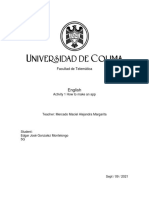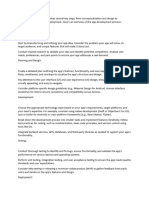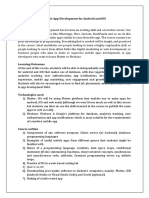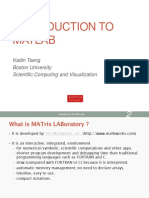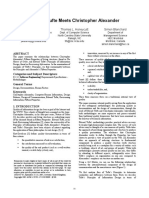0% found this document useful (0 votes)
49 views5 pagesRoadmap To Build Your First Mobile App
This document provides a comprehensive roadmap for building a mobile app, structured in four phases: Idea & Planning, Design & Development, Testing & Polish, and Launch & Post-Launch. Each phase outlines specific tasks, timelines, and tools suitable for beginners, emphasizing the importance of starting with a Minimum Viable Product and using No-Code/Low-Code platforms or Flutter for development. Key mindsets for success include starting small, embracing errors, and focusing on consistent progress rather than perfection.
Uploaded by
amadia34Copyright
© © All Rights Reserved
We take content rights seriously. If you suspect this is your content, claim it here.
Available Formats
Download as PDF, TXT or read online on Scribd
0% found this document useful (0 votes)
49 views5 pagesRoadmap To Build Your First Mobile App
This document provides a comprehensive roadmap for building a mobile app, structured in four phases: Idea & Planning, Design & Development, Testing & Polish, and Launch & Post-Launch. Each phase outlines specific tasks, timelines, and tools suitable for beginners, emphasizing the importance of starting with a Minimum Viable Product and using No-Code/Low-Code platforms or Flutter for development. Key mindsets for success include starting small, embracing errors, and focusing on consistent progress rather than perfection.
Uploaded by
amadia34Copyright
© © All Rights Reserved
We take content rights seriously. If you suspect this is your content, claim it here.
Available Formats
Download as PDF, TXT or read online on Scribd
/ 5






